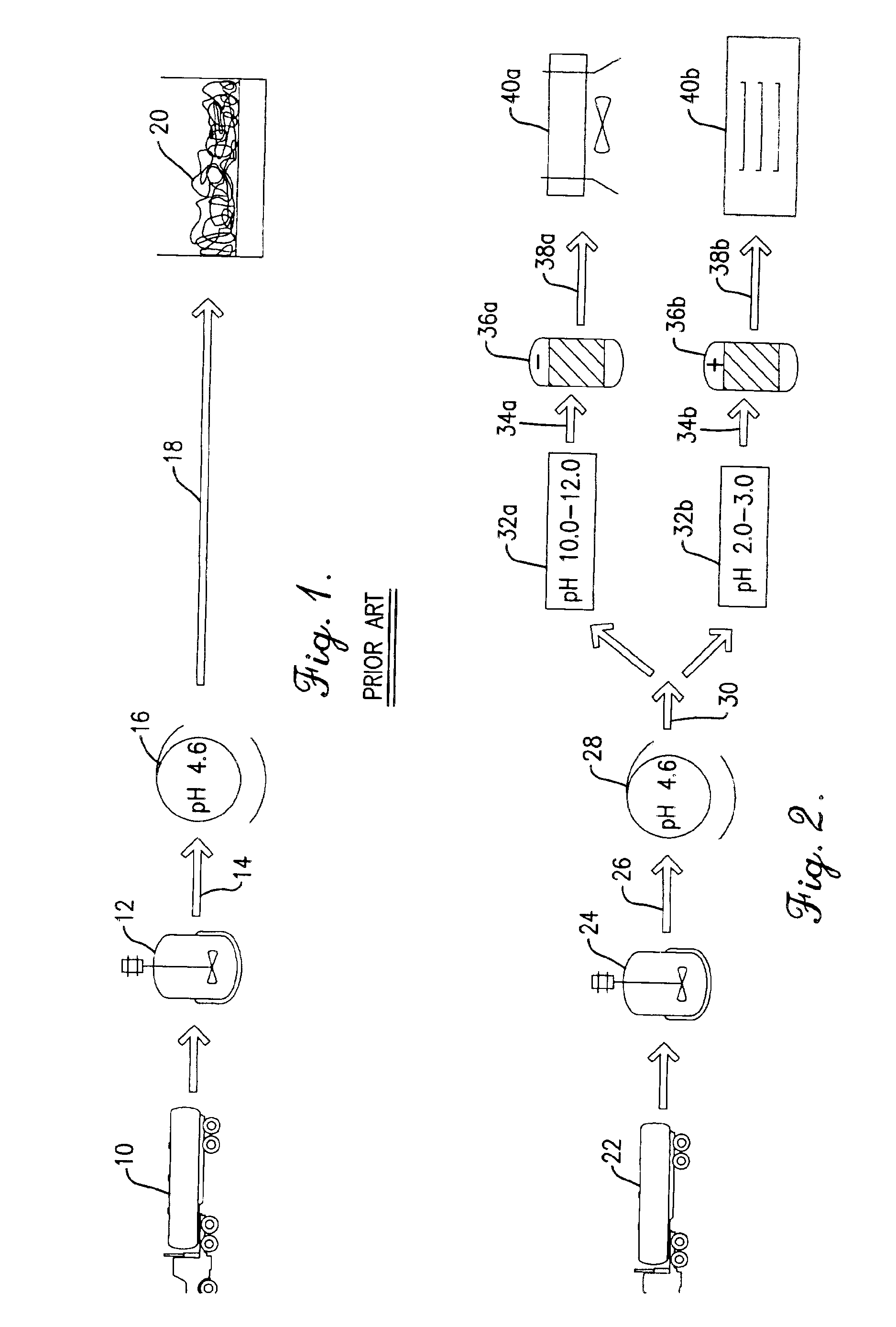Method of producing electrostatically charged gelatin
a technology of electrostatic charge and gelatin, which is applied in the direction of fluid pressure measurement, liquid/fluent solid measurement, peptide, etc., can solve the problems of affecting essentially odorless and tasteless powders. , to achieve the effect of enhancing the enhancing the overall electrostatic and enhancing the negative charge of the gelatin
- Summary
- Abstract
- Description
- Claims
- Application Information
AI Technical Summary
Benefits of technology
Problems solved by technology
Method used
Image
Examples
example 1
In this example, gelatin having a negative electrostatic charge is extracted from pigskin. Approximately 4,000 lbs. of pigskin is ground to a particle size of less than about 1.5 mm using a {fraction (1 / 16)} in. plate. The ground pigskin is then mixed with water to form a slurry. The pH of the slurry is adjusted to 2.5 using sulfuric acid. The slurry is maintained under acidic conditions for up to 4 days. The slurry then undergoes three heating steps whereby the gelatin is extracted. Each heating step lasts about 60 minutes. The first extraction step involves heating the slurry to 145° F., the second to 165° F., and the third to 185° F. The heat denaturing of the collagen contained in the pigskin results in the unwinding of the polypeptide chains thereby releasing the gelatin.
After the gelatin is extracted, the pH of the gelatin dispersion is adjusted to 4.6, the isoelectric point of the gelatin, by the addition of sodium hydroxide. The gelatin dispersion is then filtered to remove ...
example 2
In this example, gelatin having a positive electrostatic charge is extracted from pigskin. The pigskin is initially treated as described in Example 1 through the gelatin extraction and filtration stages. After filtration of the gelatin dispersion, the pH of the dispersion is adjusted to 2.5 using phosphoric acid. The gelatin dispersion is then passed through a cation column to remove trace amounts of negatively charged minerals, ions and peptides. After leaving the cation column, the gelatin is processed into powder form as in Example 1, with the exception that the gelatin concentrate is vacuum oven dried as opposed to spray dried. This process yields approximately 740 lbs. of gelatin having a positive electrostatic charge.
example 3
In this example, gelatin having a negative electrostatic charge is extracted from pigskin. The process of this example is the same as that of Example 1 and includes the additional step of enhancing the gelatin's overall negative charge by passing a negative DC current through the gelatin dispersion after impurity removal in the anion column. A negative DC current at 10 mV and 2 A is passed through the gelatin dispersion for 10 seconds. The gelatin dispersion is then concentrated, sterilized and spray dried as in Example 1. This process yields about 650 lbs. of gelatin having a negative electrostatic charge.
PUM
| Property | Measurement | Unit |
|---|---|---|
| temperatures | aaaaa | aaaaa |
| voltage | aaaaa | aaaaa |
| voltage | aaaaa | aaaaa |
Abstract
Description
Claims
Application Information
 Login to View More
Login to View More - R&D
- Intellectual Property
- Life Sciences
- Materials
- Tech Scout
- Unparalleled Data Quality
- Higher Quality Content
- 60% Fewer Hallucinations
Browse by: Latest US Patents, China's latest patents, Technical Efficacy Thesaurus, Application Domain, Technology Topic, Popular Technical Reports.
© 2025 PatSnap. All rights reserved.Legal|Privacy policy|Modern Slavery Act Transparency Statement|Sitemap|About US| Contact US: help@patsnap.com


